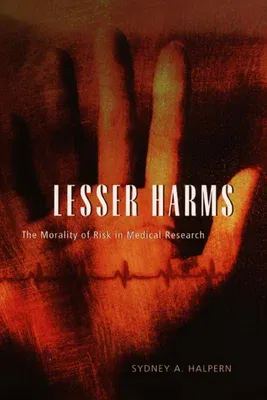Research physicians face intractable dilemmas when they consider
introducing new medical procedures. Innovations carry the promise of
preventing or curing life-threatening diseases, but they can also lead
to injury or even death. How have clinical scientists made high-stakes
decisions about undertaking human tests of new medical treatments? In
Lesser Harms, Sydney Halpern explores this issue as she examines
vaccine trials in America during the early and mid-twentieth century.
Today's scientists follow federal guidelines for research on human
subjects developed during the 1960s and 1970s. But long before these
government regulations, medical investigators observed informal rules
when conducting human research. They insisted that the dangers of
natural disease should outweigh the risks of a medical intervention, and
they struggled to accurately assess the relative hazards. Halpern
explores this logic of risk in immunization controversies extending as
far back as the eighteenth century. Then, focusing on the period between
1930 and 1960, she shows how research physicians and their sponsors
debated the moral quandaries involved in moving vaccine use from the
laboratory to the clinic.
This probing work vividly describes the efforts of clinical
investigators to balance the benefits and dangers of untested vaccines,
to respond to popular sentiment about medical hazards, and to
strategically present risk laden research to sponsors and the public.
"Concise and extremely well-written. . . . A fascinating synthesis of
sociology, history, and institutional theory."--Samuel C. Blackman,
Journal of the American Medical Association

